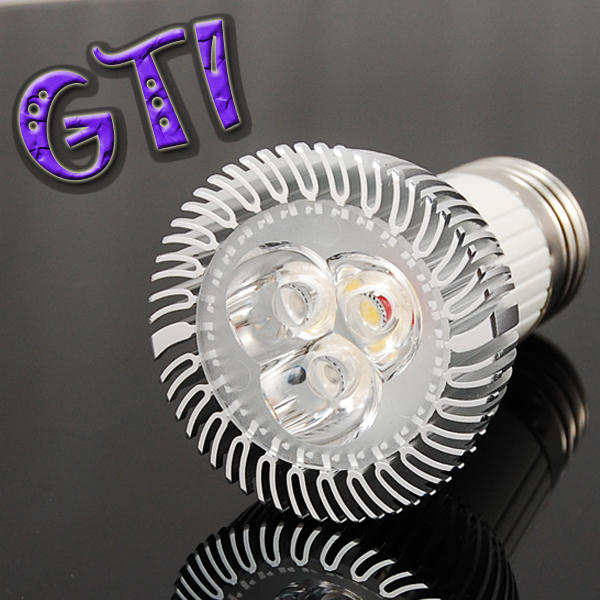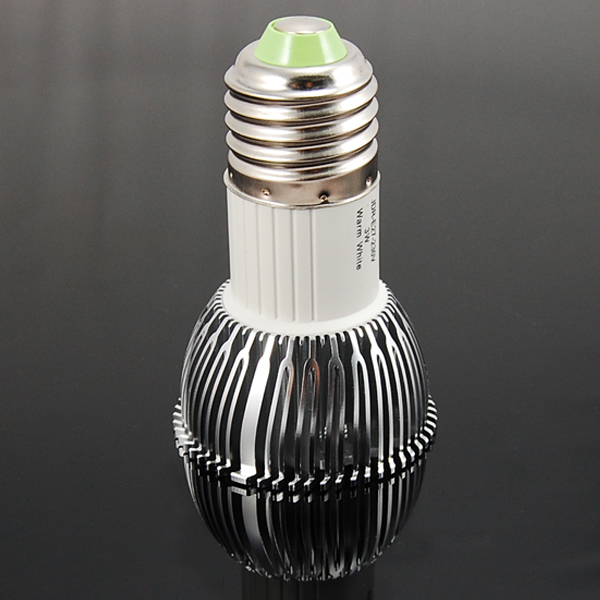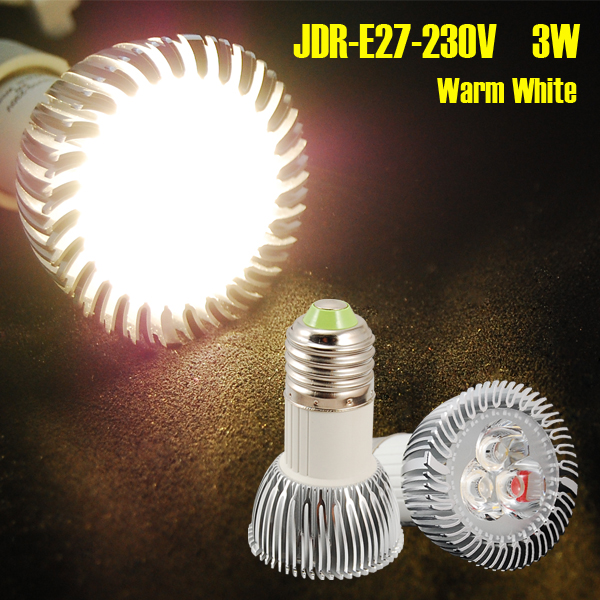WARM WHITE JDR E27 3X1W
LED BULB HIGH POWER 220V-240V
Specification
-
Certificate: CE RoSH Approved
-
Base: JDR E27
-
Source: 3x1W LED
-
Operating Temperature: -20°C to 60°C (-4°F to 132°F)
-
Working Frequency: 52-60Hz
-
Input Current: 400MA±20
-
Power consumption: 4±0.5W
-
View angle: 60°
-
Colour Temperature: 2700~3500k (Warm White)
-
Lumens: 160-180LM = 25w incandescent lamp
-
Voltage: 220V-240V
-
LED source life: 50,000 Hours
-
Dimension: Approx 5.0(D) x 8.0 (H) cm
-
Net Weight: Approx 57g
-
Note:Please contact me for discount if you would like to buy 4 bulbs or more
Description
Feature
- - A light-emitting diode (LED) is an electronic light source. A LED (Light Emitting Diode) lamp is a type of solid state lighting (SSL) that uses light-emitting diodes (LEDs) as the source of light. The colour temperature of a light source is determined by comparing its chromaticity with a theoretical, heated black-body radiator. The temperature (usually measured in kelvin (K)) at which the heated black-body radiator matches the colour of the light source is that source's colour temperature. There are two kinds of colour temperature, one is white, and the other is warm white.
Different colour temperatures are related to different effects (atmosphere) :
|
Temperature |
Source |
|
1850 K |
Candle flame |
|
2700–3300 K |
Incandescent light bulb |
|
3350 K |
Studio "CP" light |
|
3400 K |
Studio lamps, photofloods, etc. |
|
4100 K |
Moonlight, xenon arc lamp |
|
5000 K |
Horizon daylight |
|
5500–6000 K |
Typical daylight, electronic flash |
|
6500 K |
Daylight, overcast |
|
Note: These temperatures are merely approximations; considerable variation may be present. |
-
- LEDs present many advantages over traditional light sources including lower energy consumption, faster switching, longer lifetime, improved robustness, and so on.
-
- Power saving, Environment friendly.
LEDs produce more light per watt than incandescent bulbs. LEDs light up very quickly. LED will achieve full brightness in microseconds. LEDs are ideal for use in applications that are subject to frequent on-off cycling, unlike fluorescent lamps that burn out more quickly when cycled frequently, or HID lamps that require a long time before restarting.
-
- High brightness long lifetime.
LEDs can have a relatively long useful life. One report estimates 35,000 to 50,000 hours of useful life, though time to complete failure may be longer. Fluorescent tubes typically are rated at about 10,000 to 15,000 hours, depending partly on the conditions of use, and incandescent light bulbs at 1,000–2,000 hours.
-
- Recessed ceiling lights, desk lamps, pendant fixtures, spot or flood lighting, retail display lighting.
  
Payment Methods
1.We accept Paypal, Nochex and Credit Card payment.
2.Nochex address: [email protected]
*If you pay with Nochex or credit card, please leave your eBay ID, item number and postal address in the message textbox

|